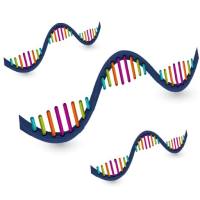Selection on the Protein-Coding Genome
互联网
互联网
相关产品推荐

Recombinant-Mouse-Selection-and-upkeep-of-intraepithelial-T-cells-protein-2Skint2Selection and upkeep of intraepithelial T-cells protein 2; Skint-2
¥12152

Coronavirus Nucleocapsid重组蛋白|Recombinant SARS-CoV-2 Nucleocapsid-AVI&His recombinant Protein,Biotinylated
¥4520

lncRNA 测序( Long non-coding RNA )
询价

Recombinant-Saccharomyces-cerevisiae-Mitochondrial-inner-membrane-i-AAA-protease-complex-subunit-MGR1MGR1Mitochondrial inner membrane i-AAA protease complex subunit MGR1 Alternative name(s): Mitochondrial genome-required protein 1
¥12474

Recombinant-Saccharomyces-cerevisiae-Bud-site-selection-protein-8BUD8Bud site selection protein 8
¥14140
相关问答

